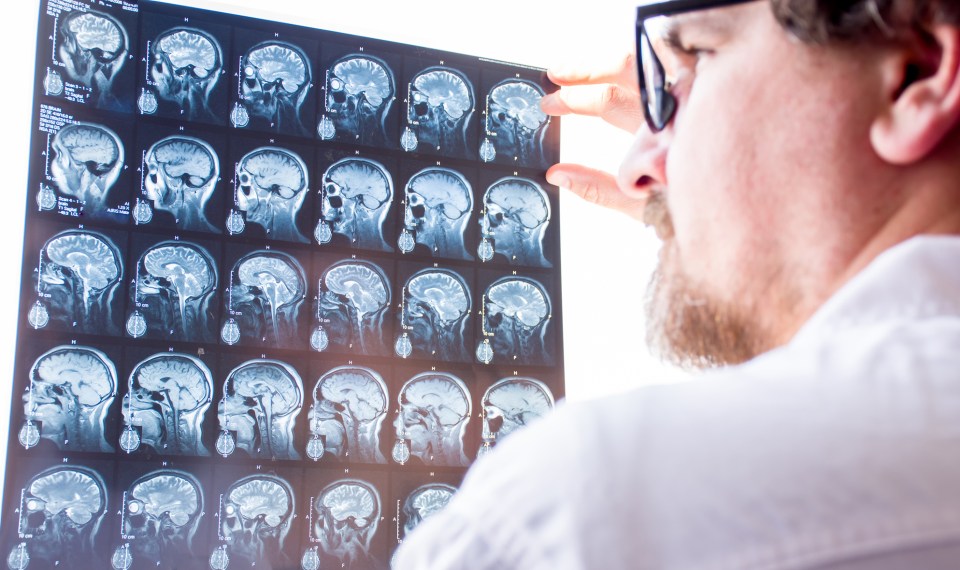Stroke occurs when the brain is deprived of oxygen and blood. It is caused by blood clots, narrowing of arteries or a broken blood vessel that bleeds into the brain. Anyone can suffer a stroke, but certain health conditions can increase your risk.
Chronic Medical Conditions and Stroke
Certain chronic medical conditions increase your chance of stroke. Identifying these conditions and following an appropriate treatment regime can help lower stroke risk. Chronic conditions associated with stroke include:
- Diabetes. The pancreas makes insulin, a hormone that helps blood glucose (sugar) enter cells and provide energy to the body. When the body doesn’t make insulin, or doesn’t make enough insulin, blood glucose levels rise. High sugar levels in the blood can block oxygen and nutrients from traveling to the brain and other parts of the body. Frequent blood glucose checks, consistently taking medications as prescribed, eating healthfully and increasing your daily exercise are all steps you can take to manage your diabetes and lower your chance of having a stroke.
- Sickle cell disease. This genetic condition is present at birth. Babies born with sickle cell disease have misshapen red blood cells that can block blood flow, leading to stroke. The stroke risk to children born with sickle cell disease is 100 times that of a child without the condition. Sickle cell can affect children of all races, although the incidence is much higher in Blacks. The American Stroke Association reports that 39 percent of children with sickle cell disease suffer “silent strokes” by age 18. Silent strokes do not present with outward signs of stroke, such as arm or leg weakness or slurred speech, but can cause memory or mood problems, impair decision-making and lead to learning difficulties. MRI screenings are recommended for children with sickle cell and a Sickle Stroke Screen (also called a transcranial doppler ultrasound or TDU) may be suggested yearly for children between the ages of 2 and 16 with sickle cell disease.
- High blood pressure. Chronic high blood pressure can damage and weaken arteries, increasing stroke risk. After time, narrowed or damaged arteries can clog or burst, causing a stroke. Managing high blood pressure is one way to reduce the risk of stroke. Monitor your blood pressure regularly and follow your doctor’s orders when taking blood pressure medications. Eating a heart healthy diet, exercising regularly, stopping smoking, reducing stress and maintaining a healthy weight can lower the risk of stroke and enhance the effectiveness of blood pressure medications.
- Atherosclerosis. In atherosclerosis – also called hardening of the arteries – fatty substances build up in the lining of arteries and block blood flow. Sometimes, the fatty plaque breaks off and travels to vessels that supply the brain with blood and oxygen, resulting in a stroke. Atherosclerosis is a progressive disease that often starts very early in life. Following a heart-healthy lifestyle is the best way to prevent this disease.
- Heart Disease. Several heart conditions, including coronary artery disease, increase the risk of stroke due to plaque build-up in the vessels or blood clots that break loose and travel to the brain. A heart attack caused by plaque in the arteries leading to the heart can also block blood flow to the brain, causing a stroke.
- Atrial fibrillation, or AFib. An irregular heartbeat where the upper chambers of the heart beats irregularly rather than in a normal rhythm. This “quivering” action of the heart means blood doesn’t flow normally between the upper chambers of the heart to the lower chambers, resulting in blood clots which can lead to stroke. If you have AFib, your risk of stroke is five times that of a person without AFib, and the condition is linked to one in seven strokes. Medications to “thin the blood” and control heartrate and rhythm are available for the treatment of AFib and often successfully lower the risk of heart attack and stroke.
- Prior stroke or transient ischemic attacks (TIA). A transient ischemic attack has the same symptoms of a stroke, but the effects are not long lasting. If you have a history of TIAs – sometimes called mini-strokes – your risk of stroke climbs to 10 times that of someone the same sex and age who has not had a TIA. As many as 80 percent of second strokes caused by clots may be preventable. Talk with your doctor about treatment for previous stroke and TIA as well as how to control other stroke risk factors.
Stroke Rehabilitation
Learn how rehabilitation can help stroke survivors recover and get back to what matters most.
Learn MoreUnpreventable Risk Factors for Stroke
While there are positive steps you can take to reduce your risk of stroke, not everything is within your control. The following risk factors don’t mean you are destined to have a stroke and not having them doesn’t mean you are in the clear either. Inherited and unchangeable risk factors include:
- Race and ethnicity. According to the American Heart Association, American Indians, Blacks, Hispanics and native Alaskans all have higher stroke risk than whites. One reason for the higher numbers in certain ethnic groups is because of other health conditions associated with stroke, such as sickle cell disease.
- Age. Stroke occurs in people of all ages, but stroke rates double every decade after age 55.
- Family history. While there is no “stroke gene” that can be passed down, certain health conditions have genetic components that can raise your risk of stroke. High blood pressure, high cholesterol and diabetes are examples of medical conditions that raise stroke risk.
- Gender. The American Stroke Association reports women are at a higher risk of stroke than men. Approximately 55,000 more women than men suffer strokes each year.
Women and Stroke
According to information on the American Heart Association (AHA) website, one in four women has a stroke. The AHA also reports stroke risk is higher if you are a woman who:
- Takes birth control pills. Taking these medications can double your risk of stroke, particularly if you have high blood pressure. If you take birth control pills, have your blood pressure checked every six months.
- Is pregnant. The risk of stroke in pregnancy is three times that of a woman the same age who is not pregnant. If you have preeclampsia (high blood pressure) during pregnancy, your risk of stroke later in life doubles. Talk with your doctor about the safest way to treat high blood pressure during pregnancy.
- Has migraines with aura. There is some evidence if you suffer migraines with aura, your risk of stroke may be increased. This is particularly true if you also smoke.
- Has been diagnosed with atrial fibrillation. After age 75, atrial fibrillation is more common in women than men. If you have atrial fibrillation, your risk of stroke is five times greater than a woman without it. Talk with your doctor about medications to reduce the risk of stroke from AFib.
Lifestyle Risk Factors for Stroke
Some risk factors associated with stroke are due to lifestyle choices. These risks can be decreased by taking care of your health and staying active. Behaviors that increase your risk of stroke include a poor diet high in cholesterol and saturated fats, obesity, a sedentary lifestyle, a high consumption of alcohol, and illicit drug use.
Stroke Facts
Stroke is a very serious occurrence. It kills brain cells and can affect the entire body. Depending on the area of brain involved it can result in weakness or paralysis of one side of the body or the entire body. Stroke can also impede your ability to think, reason, remember, pay attention or learn. Following a stroke, some patients report numbness or painful sensations worsened by cold temperatures and movement. Following a stroke, approximately 25 percent of those who recover experience a second stroke within five years. If you experience symptoms of stroke, don’t delay. Seek treatment immediately. Prompt treatment reduces disability associated with stroke.
The content of this site is for informational purposes only and should not be taken as professional medical advice. Always seek the advice of your physician or other qualified healthcare provider with any questions you may have regarding any medical conditions or treatments.



